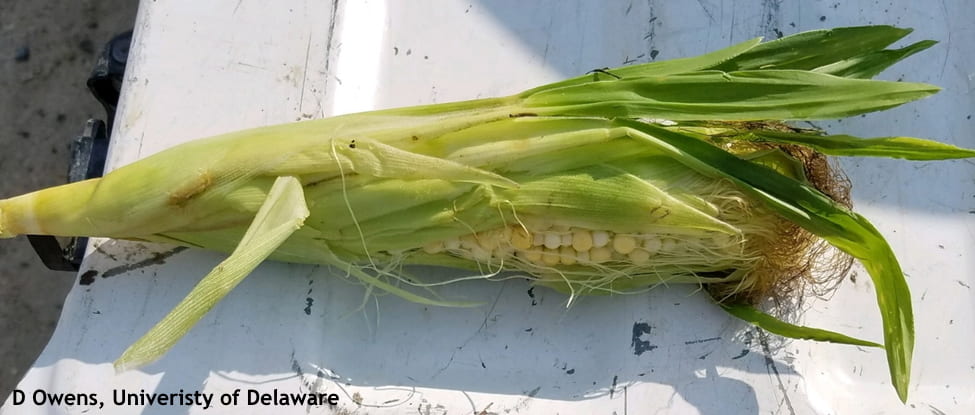David Owens, Extension Entomologist, owensd@udel.edu
Congratulations to Travis Kinnison for correctly identifying one of the major causes for sunken, discolored kernels as stink bug damage. Travis won a new sweep net with which he can scout for stink bugs in other crops (sorry, it’s not easy using a sweep net in corn!). All other correct entries will be entered into an end of season raffle.
Stink bugs generally are present along edges of fields, numbers typically drop off quickly going into the interior of a field. Browns are our most common corn infesting species, and can be a bit more difficult to control with pyrethroids. Bifenthrin is generally thought to be a better pyrethroid versus stink bugs, but I do not know if the difference is great enough that would notice a treatment effect given the number of sprays applied to protect ears from corn earworm.
This from Nancy Gregory: Feeding probes by stink bugs may not show up on closed husks. During seed formation, kernels become shriveled, deformed, and ears may show a bend. Feeding on more mature kernels will result in only minor discoloration. Yield and market value may be affected, especially in sweet corn. Secondary microorganisms such as bacteria, yeasts, and Fusarium can colonize damaged tissue.
Stink bug blemished kernels and secondary pathogen attack.
‘Banana-boat’ corn that has bent and growing outside of the husk; most likely caused by stink bug feeding early in the ear development process.



